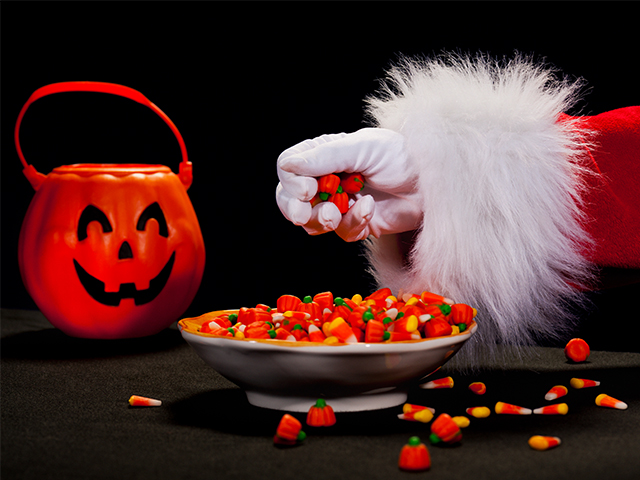There may be less treats and more tricks this Halloween, which bodes ill for the holiday shopping season.
The National Retail Federation (NRF) estimates that 69 percent of U.S. consumers plan to participate in this year’s Halloween celebration. That’s an increase from last year’s 65 percent and in line with the prepandemic 68 percent in 2019. Total Halloween spending is expected to rise nearly five percent to a record $10.6 billion, up from last year’s record of $10.1 billion.
That sounds pretty good until you adjust the figures for inflation. The Consumer Price Index is up 8.2 percent over the past 12 months. Candy prices are up 13.1 percent, according to last week’s report from the Department of Labor. This suggests that real spending on Halloween is down 8.1 percent.
What’s more, that spending is spread out over a bigger portion of U.S. households. On a per household basis, spending is down by even more. Consumers plan to spend $100 on average for Halloween candy, decorations, and costumes, according to the NRF. Although that would be the second-highest spending on record, it is last year’s $103. So spending is expected to fall nominally as well.
The Commerce Department on Friday reported that retail sales were flat in September compared with the prior month, which means the fell lower in real terms. Economists had been expecting a gain of three-tenths of a percent.
Some of that weakness may have been due to Hurricane Ian. Bank of America analysts who tracked credit and debit card usage said that Ian caused “a collapse in total card spending in Florida, North Carolina and South Carolina.” The bank estimates that Hurricane Ian shaved 0.2 to 0.3 percentage points off the month-over-month 0.1 percent growth in sales excluding autos. But the bank points out that spending was weak across the country, suggesting that something more is at work.
One of the reasons for weaker consumer spending is probably sticker shock. Faced with higher prices on just about everything, consumers are pulling back from purchases. Discretionary spending around holidays is likely particularly vulnerable.
There are three other factors sending a chill through retail. First, the pandemic shopping spree saw consumers stock up on goods like appliances, furniture, and computers. The appliance upgrade cycle that might otherwise have lasted several years got compressed into just a year and a half. One result is that some of the spending that would otherwise have taken place in the second half of this year has already happened.

(iStock/Getty Images)
Second, the slowdown in the housing market is lowering demand for household goods. Existing home sales have fallen every month since January and were down 0.4 percent from August to September and 19.9 percent from a year ago. This slowdown hurts sales because moving is a major trigger for purchases. Sales at furniture stores were down 0.7 percent in September, and sales at appliance stores were down 0.8 percent.
Third, wages have not kept up with prices. Last week, the Department of Labor said real average hourly earnings decreased 0.1 percent from August to September. Compared with a year ago, the average real wage is down 3.0 percent. Many workers are pulling back on spending because they have no other choice.
This does not mean people that will forgo buying Christmas presents. Even in the direst of economic times, people still spring for gifts to put under the Christmas tree. But it likely means that retailers are in for another disappointing holiday season.

COMMENTS
Please let us know if you're having issues with commenting.